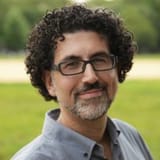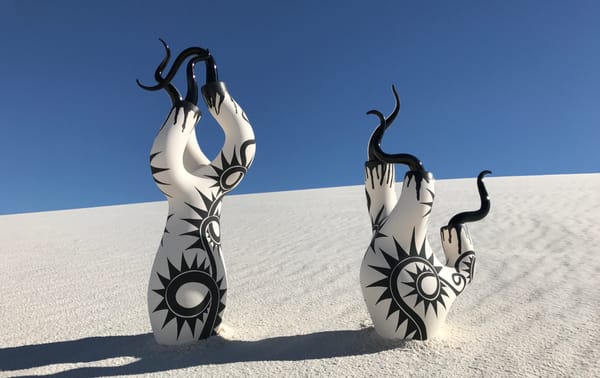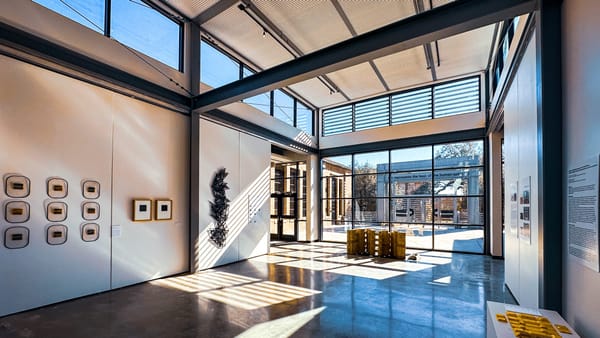10 Art Shows to See in NYC This June
This month: Pacita Abad’s trapunto paintings, Nona Faustine’s stirring body art, Ibrahim Said’s futuristic ceramics, and much more.
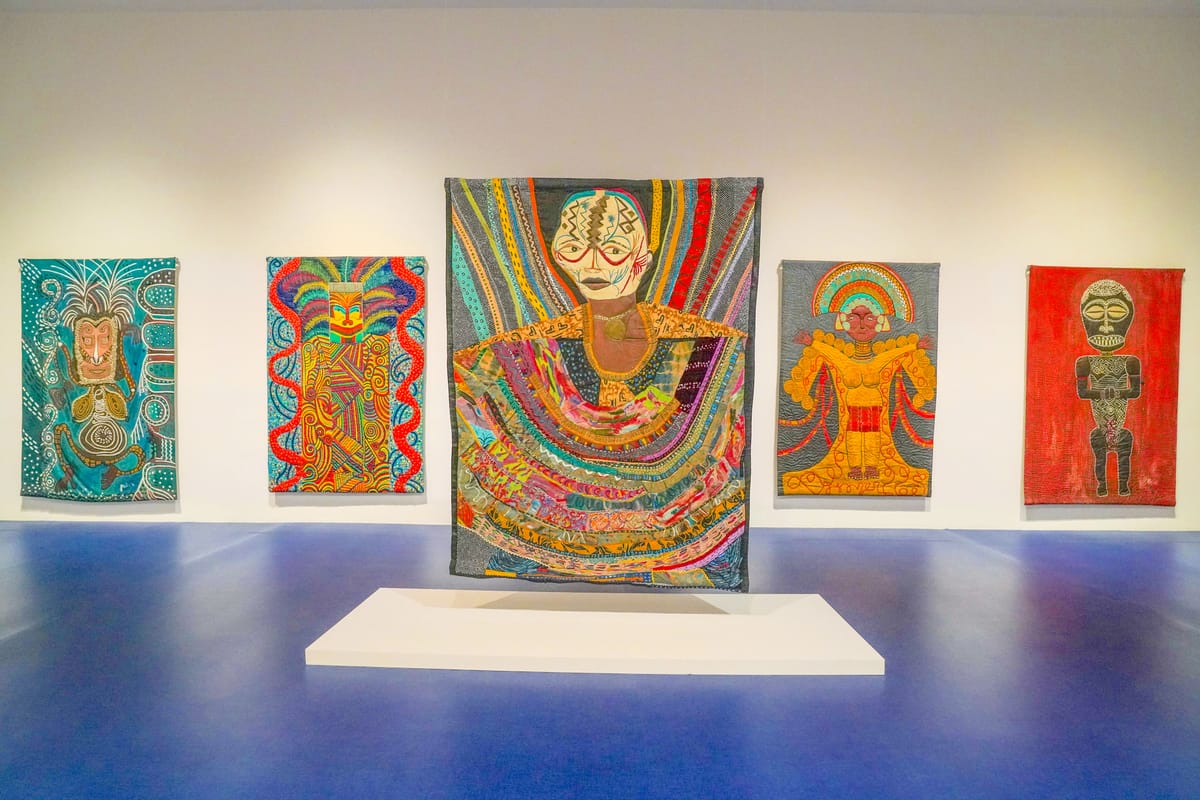
We all know that summer is the art world’s slow season — time for generic gallery and museum group shows. But that doesn’t mean there’s nothing to see. From a gallery’s revelatory look at under-recognized Lebanese artist Bibi Zogbé to exceptional long-term museum shows on artists Pacita Abad, Nona Faustine, and Toshiko Takaezu, and a standout contribution to the Whitney Biennial by Sharon Hayes, there’s plenty of great art in the city. That most of our featured artists are women is an encouraging sign — hopefully, the trend of centering formidable women artists will continue into the future. —Natalie Haddad, Reviews Editor
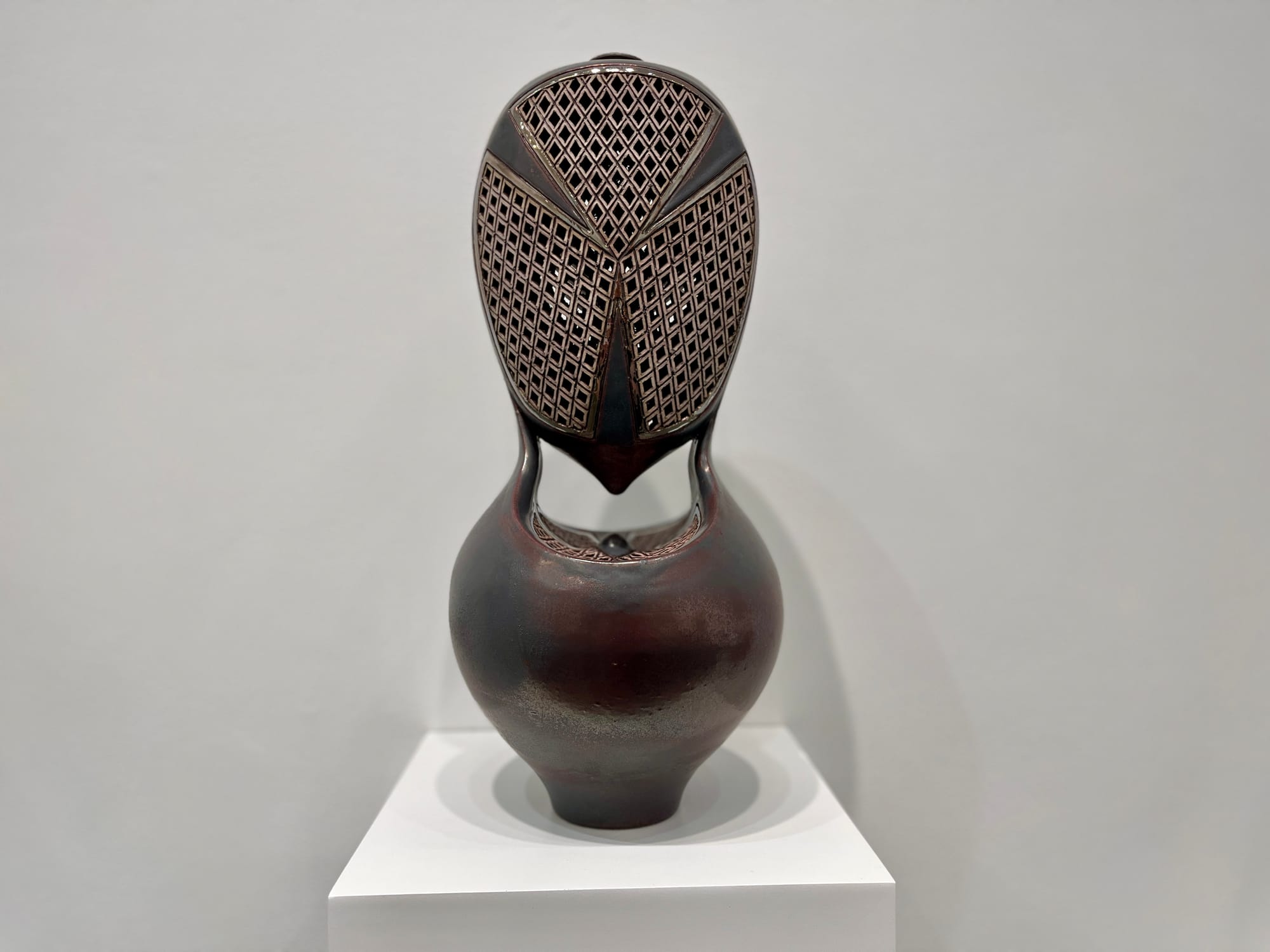
Ibrahim Said: From Thebes to Cairo
Egyptian ceramicist Ibrahim Said's first major solo show in New York City is a revelation. The 48-year-old artist’s vessels embody a futuristic twist on millennia-old traditions, challenging the laws of gravity and the conventions of pottery alike in a celebration of his Egyptian-Arab heritage. The show also includes a wall-to-wall installation of bowls adorned with the 99 names of Allah in Islamic tradition. Among them are "The Creator," "The Maker," "The Fashioner," and "The Perceiver" — attributes that could fit any artist blessed with the God-given gift of creativity. —Hakim Bishara
Yossi Milo (yossimilo.com)
245 Tenth Avenue, Manhattan
Through June 15
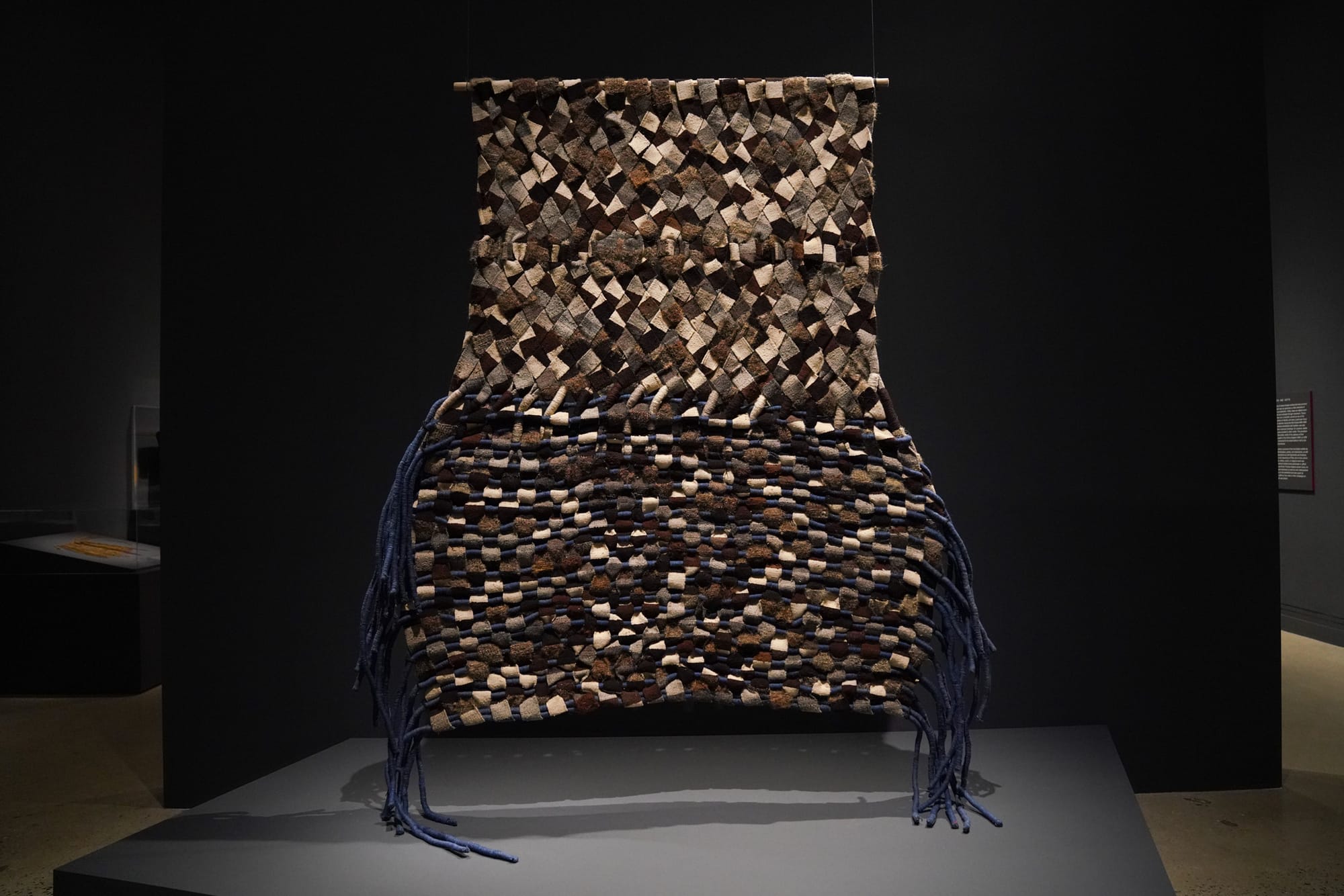
Weaving Abstraction in Ancient and Modern Art
On a mission to illuminate the ancient origins of modern abstract art, this compact exhibition brings together two remarkable bodies of woven works from different eras. Geometric tapestries, vibrant featherwork, and fringed bags from the Andean region, all dating from the 4th century BCE through around the 16th century CE converse with wall hangings and sculptures by four modern weavers: Olga de Amaral, Anni Albers, Lenore Tawney, and Sheila Hicks. Taken together, these pieces pay tribute to the phenomenal technical innovations and designs of long-ago weavers and the 20th-century artists who took inspiration from them, ushering in an abstract visual vocabulary for modern art. —Julie Schneider
Metropolitan Museum of Art (metmuseum.org)
1000 Fifth Avenue, Upper East Side, Manhattan
Through June 16
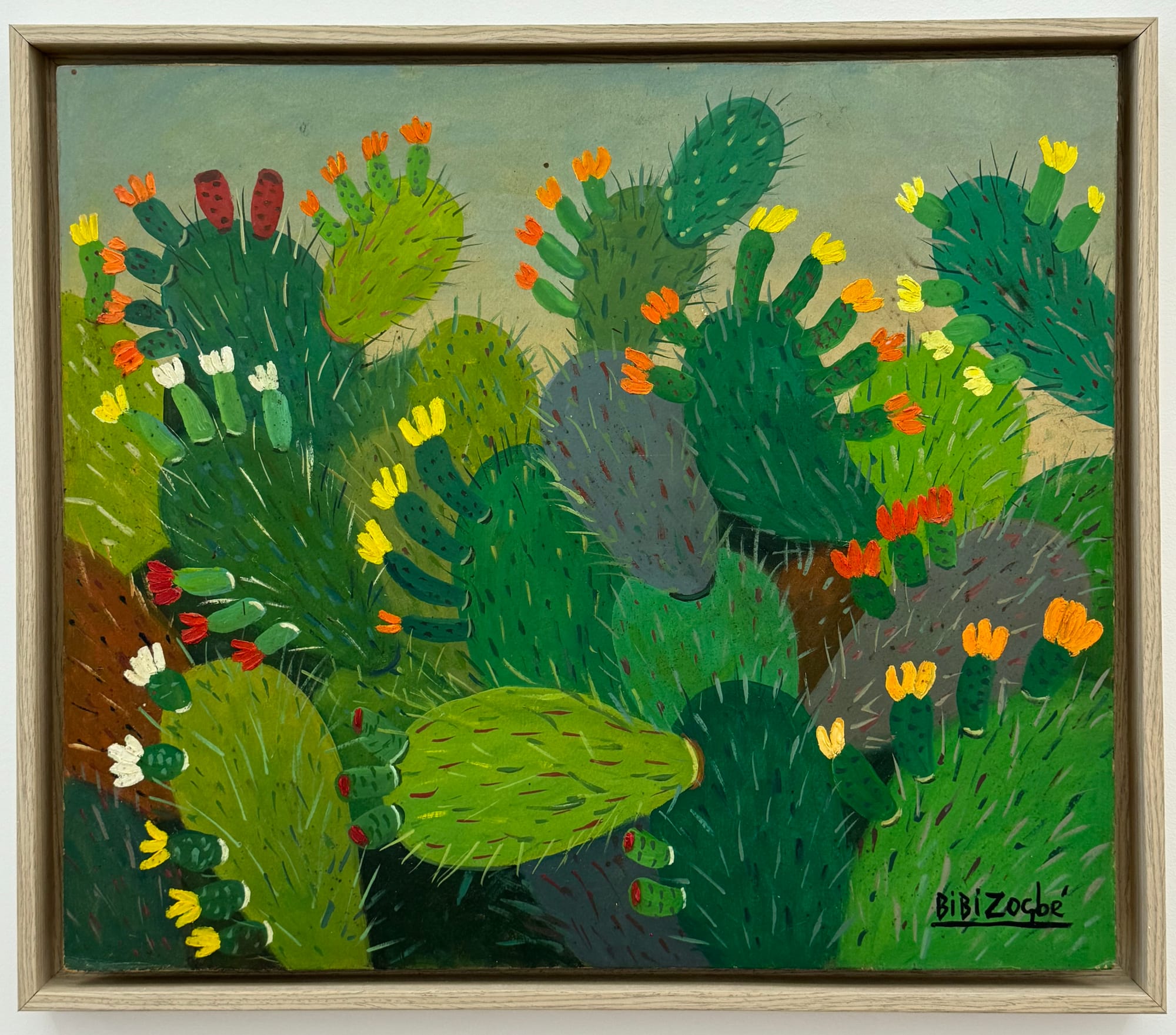
Bibi Zogbé: Works 1938–1965
There is a je ne sais quoi to how Bibi Zogbé painted flowers and plants. Although it’s hard to put into words, one unique element is texture. Whether the subject is thistles in “Chardons del Campo (Thistles of the Field)” (1955), cacti in “Cactus” (1953), or waterlilies in “Nenúfares” (1955), Zogbé’s subtle contrasts between sharpness and softness stand out. The artist’s life was a similar mix of prickly and supple. Born in 1890, she grew up in the picturesque Lebanese village of Sahel Alma on the Mediterranean. Near an abundant spring, the residents built an elaborate irrigation system, enabling them to cultivate far more elaborate gardens than other towns. At 16, she moved to Argentina and married the wealthy Lebanese-Argentinian businessman Domingo Samaja under duress. She returned to painting in the 1930s, after a divorce, earning the nickname “La Pintura de Flores.” A rueful nostalgia for her childhood in Lebanon saturates these paintings, beneath the vivid colors. Though she remained in Argentina, she never stopped yearning for the sights, smells, and textures of Sahel Alma’s unique gardens. Predictably, she was left out of earlier, male-dominated Euro-American accounts of modern painting. Although she may now feel plucked from obscurity, she deserves her place in the central pavilion 2024 Venice Biennale, as well as in the front room of the Andrew Kreps Gallery, curated by Carla Chammas. Her mesmerizing flowers — delicately sharp and piercingly soft — speak to finding one’s own vivacity. —Daniel Larkin
Andrew Kreps Gallery (andrewkreps.com)
394 Broadway, Tribeca, Manhattan
Through June 17
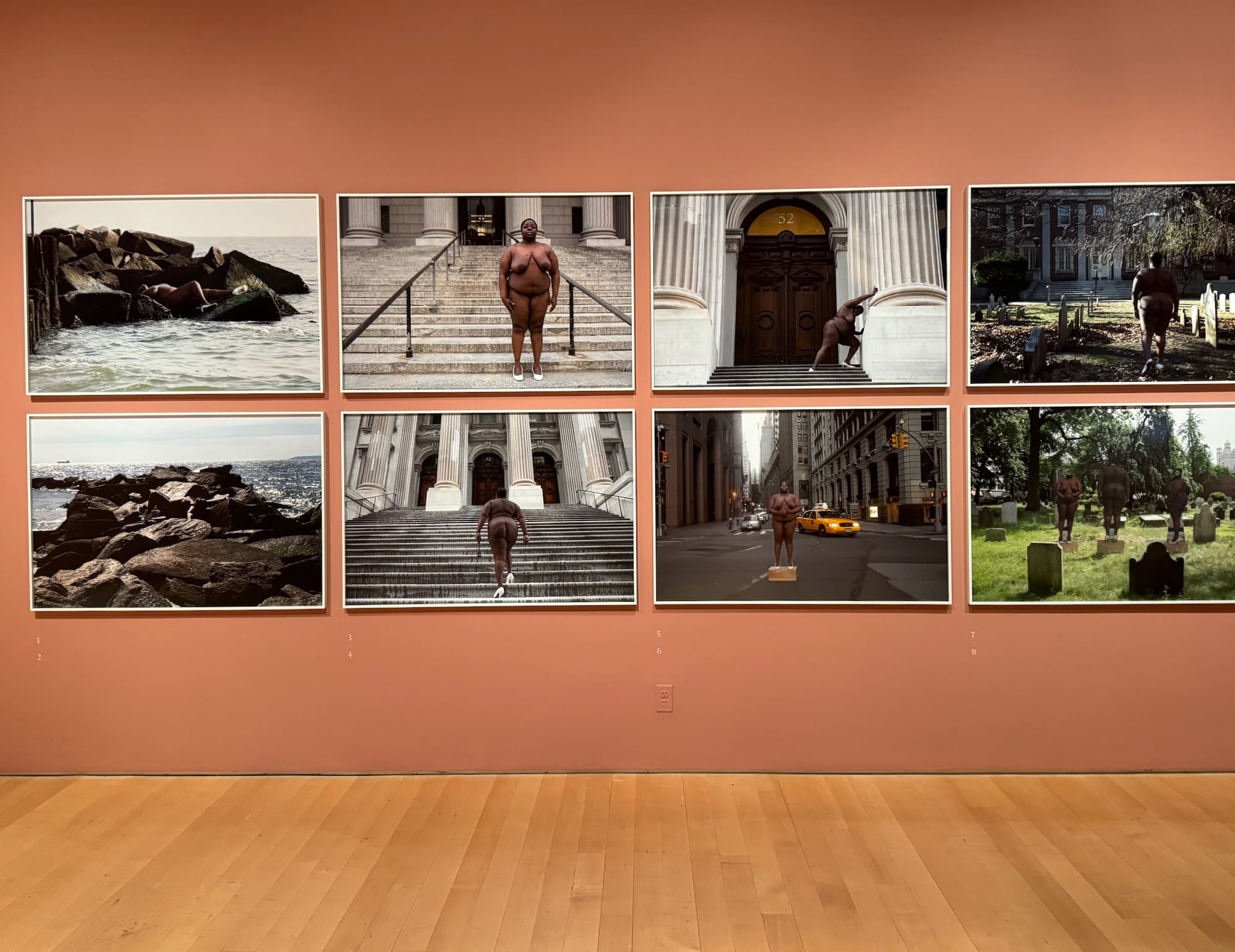
Nona Faustine: White Shoes
At the core of artist Nona Faustine’s solo exhibition is the question, “What does a Black person look like today in those places where Africans were once sold, a century and a half ago?” The images she stages encourage you to look at some familiar sites and locales anew. It’s hard for me to walk by 74 Wall Street nowadays without connecting it to the history of slavery, all thanks to Faustine. Infused with a compelling history lesson, her exhibition demonstrates that the power of the human body, particularly a “brown, fat body” (her words), in public and in museums can help us reexamine our urban and lived spaces through a lens that refuses to sweep away the ugly history that got us here in the first place. —Hrag Vartanian
Brooklyn Museum (brooklynmuseum.org)
200 Eastern Parkway, Crown Heights, Brooklyn
Through July 7
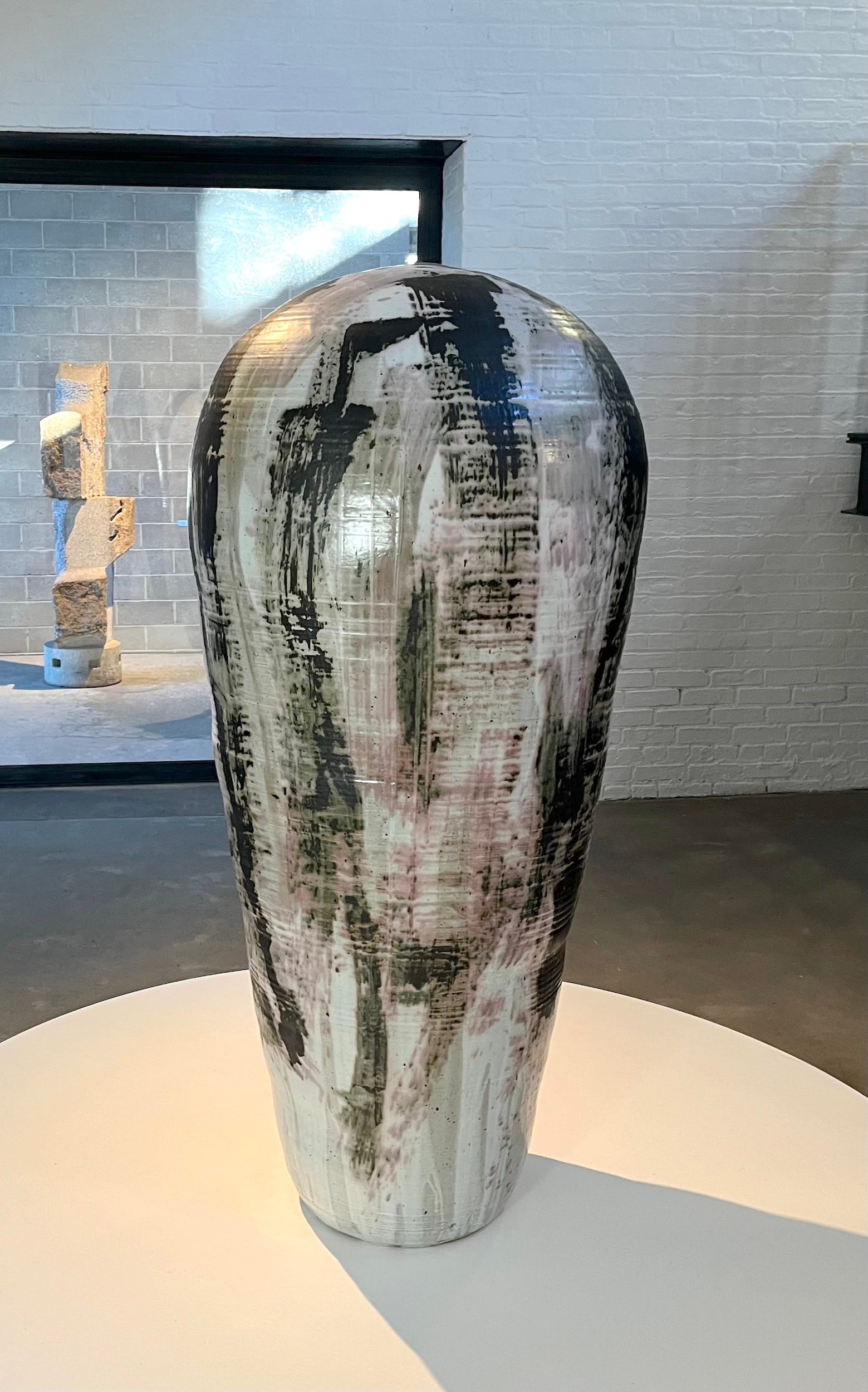
Toshiko Takaezu: Worlds Within
The ways Toshiko Takaezu cracked and cajoled the ceramic world is fully expressed in Worlds Within at the Noguchi Museum. Visitors may wander among her famous towering forms unimpeded by pedestals or ropes, achieving the sensation of an intimate studio visit. For the show, the museum obtained work that rarely travels, like the Star Series (1999–2000) from the Racine Art Museum, and carefully reassembled her earliest exhibition displays from Cranbrook Academy of Art in Michigan, the Contemporary Arts Center of Hawaiʻi, and other institutions. Her emotion, discipline, and sense of play are evident in everything from the Momos, a variant of her closed forms with a cleft at the crest, which she made for many years after her mother’s death, to her spherical moons hung in hammocks, a method for drying that became a manner of display. Her bold and bewitching glazes confirm that Takaezu was not only a master of clay, but a great American painter in the round. —Kealey Boyd
Isamu Noguchi Foundation and Garden Museum (noguchi.org)
9–01 33rd Road, Long Island City, Queens
Through July 28

Sharon Hayes: “Ricerche: four” at the 2024 Whitney Biennial
This year’s Whitney Biennial may be mostly boring, attested to by the general boredom that appears on people’s faces when you mention it, but I want to draw your attention to the excellent work by Sharon Hayes, a two-channel video in which LGBTQ+ elders talk about their lives and how things have or haven’t changed over time. Hayes does a good job of assembling a broad range of American identities to offer a look at the social mores that have shifted over the years. This project winks to Pier Paolo Pasolini’s Comizi d’Amore (Love Meetings) (1963), which spoke to post-WWII Italians about sexuality, and I venture to guess that it might be one of the first times that visitors — particularly younger ones — will encounter older LGBTQ+ figures.
There is one point in the video that breaks my heart, though — when a trans woman mentions the now debunked stat that most trans women of color are not expected to live past the age of 35. As Kate Sosin, writing for The 19th, explains, that belief is based on a questionable and anecdotal statistic in the first place. It’s a good reminder that we need more of these opportunities to discuss and hear each other if we’re going to ensure the passage of generational knowledge from those who came before us, so that we can build on their work and learn from each other’s mistakes. A powerful artwork. —HV
Whitney Museum of American Art (whitney.org)
99 Gansevoort Street, Meatpacking District, Manhattan
Through August 11
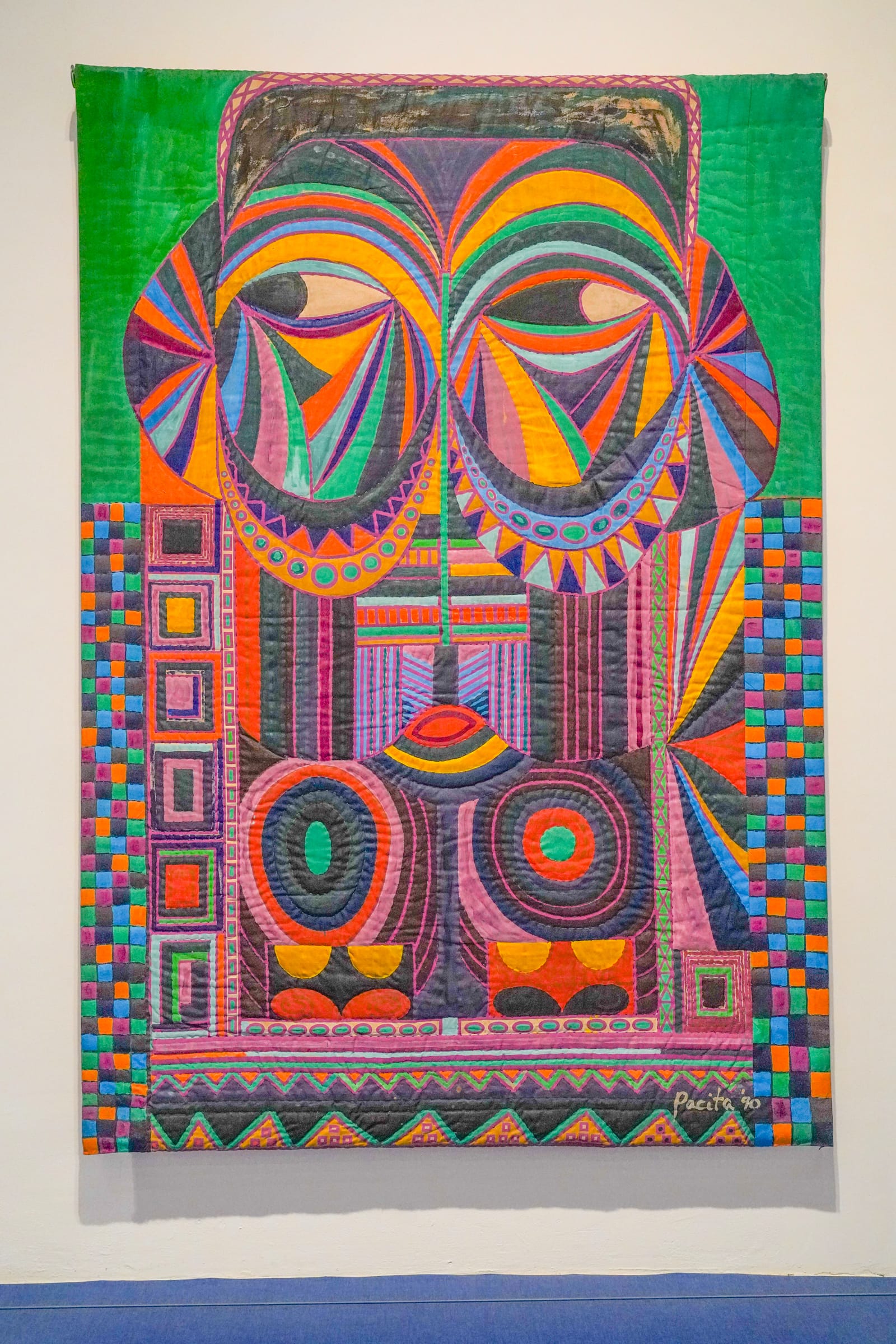
Pacita Abad
Big, bold, and bright, Pacita Abad’s mixed-media artworks pulse with a zest for the world, in full color. Throughout her three-decade career, from the 1970s until her untimely passing in 2004, the Filipina-American artist traveled to 62 countries and lived in 11. Along the way, she learned local art-making techniques, collected fabrics, and sponged up visual inspiration that appears throughout her distinctive and experimental body of work. Her signature “trapunto paintings” — maximalist oil and acrylic works backed with fabric and stitched together like a quilt — are embellished with brush marks and an array of materials (rickrack, metallic trims, sparkling sequins, beads, buttons, cowrie shells, mirrored glass). Depicting faces, figures, and scenes of everyday life, and veering into lively abstraction, more than 5o pieces are now on display at MoMA PS1 as part of the first major survey of Abad’s work. —JS
MoMA PS1 (momaps1.org)
22–25 Jackson Avenue, Long Island City, Queens
Through September 2
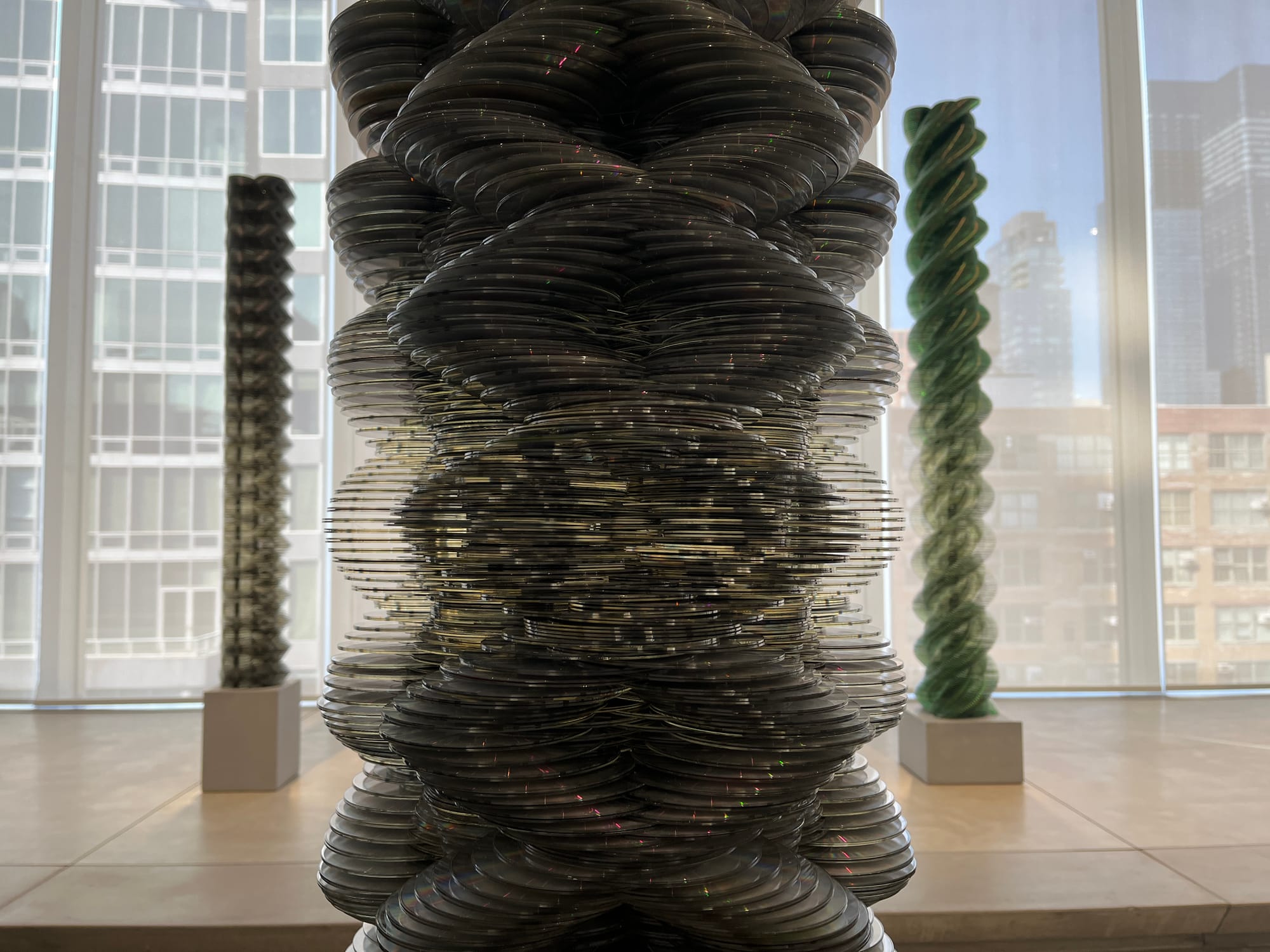
Tara Donovan: Stratagems
I hesitate to confess this, but the first CD I purchased was Bon Jovi's album Keep the Faith in the mid-1990s. I'd like to believe my musical taste has improved dramatically since then. Memories of this teenage lapse in judgment resurfaced as I stood in front of Tara Donovan's sculptures, made entirely of found CDs. Called "stratagems," these technological relics are upcycled into columns that sit atop concrete pedestals, refracting light from the gallery windows in such a way that creates an optical illusion of movement.
You can read several tropes into these alluring sculptures: nostalgia for bygone times, the harms of plastic on the environment, or even data we carry in our bodies, as some of the artworks whirl like the double helixes of DNA. To me, they appeared to correspond architecturally with the shimmering glass towers of Hudson Yards, seen in the background of these works. Will these skyscrapers remain standing after a climate apocalypse, or will the capitalist greed they symbolize take us down first? Either way, we've got to keep the faith. —HB
Pace Gallery (pacegallery.com)
540 West 25th Street
Through August 16
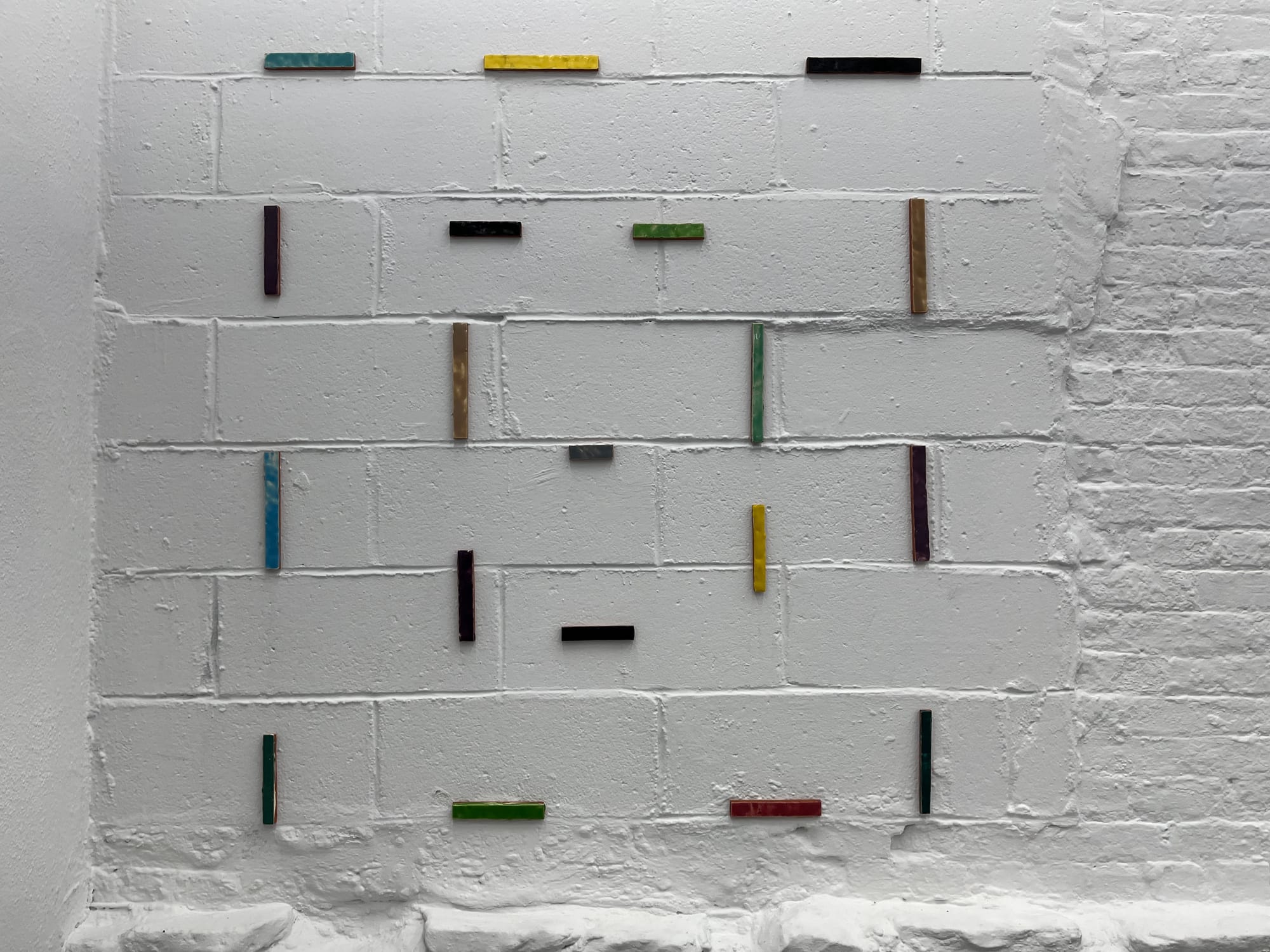
Painting Deconstructed
What is painting today? The art market and MFA-industrial complex would have you believe it's a valid question. What they really mean to ask is: What's selling these days? Let painting be whatever it wants, the 45 artists in this exhibition seem to say. Let it burst out of the confines of the canvas and flirt freely with other disciplines like sculpture and textile, even at the risk of becoming unrecognizable to itself. With innovative, multi-dimensional works of artists at different stages of their careers — among them luminaries Howardena Pindell and Sanford Biggers — I walked out of this show feeling excited about painting today, whatever that may be. —HB
Ortega y Gasset Projects (oygprojects.org)
363 3rd Avenue, Brooklyn
Through August 18

